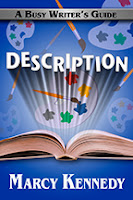Part of the Indie Author Series
A couple of months ago, I started a series on advertising as an indie author. We’ve already looked at a big picture overview of when and what we might want to advertise, and last month we talked about whether there’s ever a time when it’s okay to lose money on advertising.
From this point on, we’ll be looking at advertising where we earn back at least as much money as we invested in the ad. But there’s something we need to do before we can go any further talking about ads. We have to figure out how to measure whether our ads are earning us money or not. It’s fine to say we want them to earn us money, and another thing entirely to know how to tell if they are. That’s what I’m going to walk you through this month and next month.
(Over the following months, I’ll cover specific types of advertising and how to navigate them.)
I love math and formulas, but if you don’t, don’t panic. It’s not complicated, and there are great tools out there to help you if you don’t want to start your own tracking system from scratch.
We’re going to want to track sales, page reads (if we’re in Kindle Unlimited—check out this post if you’re not sure what I mean by that), and read through. What we’re looking for is a positive return on investment.
Calculating Your Return on Investment
Return on investment (ROI) is a measurement of how much we’ve gained or lost from an investment. In this case in particular, ROI is how much money we’ve lost from an ad or have earned from an ad.
Here’s the formula:
Return on investment = (profit / cost) x 100
(Multiplying it by 100 turns it into a percentage.)
Let me break that down a bit.
Cost is simply how much we paid for the ad. For our example, let’s say I bought a newsletter ad for $16.
For profit, we have to remember to calculate how much money we get to keep from each sale. Retailers takes a percentage of our sales, and if we don’t remove their cut, it’ll skew our calculations.
So, for example, from every sale made on Amazon.com on a book priced between $2.99 and $9.99, I earn 70% of the price. Amazon also charges a delivery fee. (You can find it in the monthly downloadable report. It’s based on each book’s file size.)
So the formula is (price – delivery fee) x royalty.
For one of my pen name’s $2.99 books, that math looks like this: (2.99 – 0.09) x 0.7 = 2.03. I make a profit of $2.03 for every book sold.
For our fictional newsletter ad, I’d have had to put my book on sale for 99 cents, so we’ll do the math for that. (Amazon waives the delivery fee for 99 cent books, and the royalty is 30%.)
Profit = 0.99 x 0.3 = 0.29
I made 29 cents per sale. Let’s assume I sold 15 copies above what I’d normally sell thanks to my ad for a total profit of $4.35.
ROI = (4.35 / 16) x 100 = 27% (approximately)
Okay…but what does that percentage mean?
When our ROI is below 100%, we’ve lost money on our ad. When it’s at 100%, we’ve broken even. If our ROI is above 100%, we’ve made more money than we spent.
Calculating that percentage gives us an objective way to compare the results of different ads. If I run an ad on a second newsletter than costs me $25, but gives me a ROI of 120%, I know that second ad was more profitable for me.
Adding in Page Reads
If we’re in Kindle Unlimited, then we can also add in additional page reads.
Let’s say my page reads were 500 pages higher than normal on the day the ad ran and then for the following three days. (You’ll have to do a little guess work if you want to include page reads because people who borrow on the day of your ad won’t always read the whole book that day.)
We’ll say the page read rate is 0.004/page. (Meaning we got 0.004/cents per page read.)
0.004 x 1500 = 6
So from page reads through Kindle Unlimited, I would have earned an additional $6. When we add that into our ROI equation as part of the profit, we get the following:
ROI = (10.35 / 16) x 100 = 64%
That’s much closer to earning back my investment.
If you’re “wide” (meaning you’re selling your books on retailers other than Amazon and aren’t in Kindle Unlimited), then to get your profit number, you’ll need to add in your above-normal sales from all the retailers you’re selling on, rather than adding in your page reads.
How Do We Know How Many Books Our Ad Sold?
And now we’ve reached the sticky wicket of all this. We have to have some way of knowing how many sales our ad generated.
Some sites use their affiliate links in the ads, and they’ll tell us exactly how many sales the ad generated. For others, we have to figure it out on our own.
We have a couple options. I track my sales regularly, so my preferred method is to simply look at how many sales I make above normal. It’s not exact, but for me, it’s better than the other option.
The other option is, if we’re able, to use our own Amazon affiliate code. We’ll know exactly how many sales our ad generated because the tracking pixel records it all (and we even earn a small commission on each sale making it easier to get a positive ROI). Here’s the catch. Using your Amazon affiliate code anywhere other than on a website you own is against Amazon’s rules. If they find out, they’ll close your account. (There are ways you can re-direct certain types of ads to or through a website you own, but that’s well beyond the scope of this post.)
That’s it for this time. Next month, we’ll dive into figuring out the read through if we’re running an ad on the first book in a series and how that affects our ROI.
If you know of any better ways to track your sales from an ad or you have any tools you’d like to recommend that help with tracking, I’d love to hear about it in the comments!
 Marcy Kennedy is a mystery and speculative fiction writer who believes fantasy is more real than you think. Alongside her own writing, Marcy works as a freelance fiction editor and teaches classes on craft and social media. She’s also the author of the Busy Writer’s Guides series of books. You can find her blogging about writing and about the place where real life meets science fiction, fantasy, and myth at marcykennedy.com.
Marcy Kennedy is a mystery and speculative fiction writer who believes fantasy is more real than you think. Alongside her own writing, Marcy works as a freelance fiction editor and teaches classes on craft and social media. She’s also the author of the Busy Writer’s Guides series of books. You can find her blogging about writing and about the place where real life meets science fiction, fantasy, and myth at marcykennedy.com. Blog | Facebook | Twitter | Amazon | Apple iBooks | Barnes & Noble
About Description
 Description in fiction shouldn’t be boring for the reader or for the writer.
Description in fiction shouldn’t be boring for the reader or for the writer. Description: A Busy Writer’s Guide will help you take your writing to the next level by exchanging ho-hum description for description that’s compelling and will bring your story to life, regardless of the genre you write.
In Description: A Busy Writer’s Guide, you will
- find the answer to the age-old question of how much description is too much;
- learn how to use point of view to keep description fresh;
- recognize the red flags for boring description in fiction;
- explore how to use all five senses to bring your descriptions to life for the reader;
- discover the ways metaphors and similes can add power to your descriptive writing;
- gain the tools needed to describe setting, characters, and action in engaging ways;
- learn how descriptions can add conflict, enhance the theme, and amp up emotion; and
- much more.


Solid analysis, thanks Marcy!
ReplyDeleteOne thing to mention: in addition to ROI itself, there's the publicity effect of simply making people more aware of your books and more likely to buy them in the future. (And the ongoing effect that each buyer has a better chance of buying your other books too.) So a 100% ROI or even one a bit below it might still be better than "breaking even" in eventual terms. Then again, that's the effect that's hardest to measure.
Plus there's the ad's other "cost," the time and headache of managing it when you could be using that to write more. Wearing yourself out marketing for modest profits is no victory.
So ROI isn't the whole picture on evaluating an ad. But it's certainly a clearer measure than how much you hope for long-term effects or trying to weigh how many more ads you might juggle in a month. Hard numbers are just the thing for clarifying that.
I couldn't agree more. I'll get into that in more depth when I cover the different types of ads. I don't find Facebook ads, for example, to be a good ROI for me. Even if I technically break even, I've spent so much time setting them up and monitoring them that it's not worth it. A newsletter ad slot, though, takes me five minutes to book. Even if I have a lot ROI, I consider it a win because it took me almost no time to reach readers I wouldn't have otherwise reached.
Delete